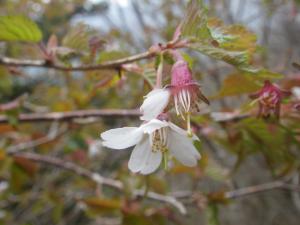本文
Mt. Ishizuchi & Nearby Peaks
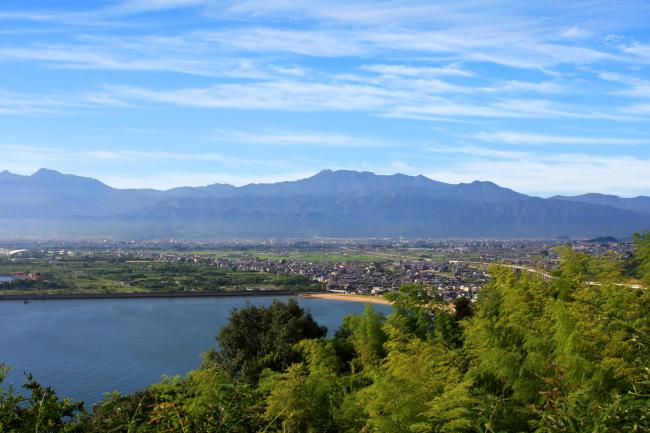
Centered on Mt. Ishizuchi, the tallest peak in western Japan (1,982 m), the Ishizuchi Mountains extend for over 50 km east to west along the border of Ehime and Kochi Prefectures on Shikoku. In addition to Tengu-dake, the highest point on Mt. Ishizuchi, the mountain range has over 10 peaks exceeding 1,700 m. These grand mountains feature diverse terrain and geological features, stunning valleys, and alpine plants particular to the region, making each peak a unique experience for hikers.
Peaks of the Ishizuchi Mountains
Mt. Ishizuchi is known as one of the 100 Famous Japanese Mountains, and several other peaks in the range are counted among the 200 and 300 Famous Japanese Mountains.
Mt. Ishizuchi, Mt. Sasagamine, and Mt. Kamegamori are called the "Three Peaks of Iyo" for their beauty.
*Iyo is the old name for Ehime Prefecture.
▶Mt. Ishizuchi (1,982 m, tallest peak in western Japan, 100 Famous Japanese Mountains)
▶Mt. Sasagamine (1,859.6 m, 200 Famous Japanese Mountains, 100 Famous Shikoku Mountains)
▶Mt. Kamegamori (1,896.5 m, 300 Famous Japanese Mountains)
▶Mt. Iyo-Fuji (1,756.2 m, 300 Famous Japanese Mountains)
▶Mt. Kanpuzan (1,763 m, the border between Ehime and Kochi Prefectures)
▶Mt. Dogamori (1,689 m, the western edge of the mountain range)
Clearly-defined Vertical Distribution
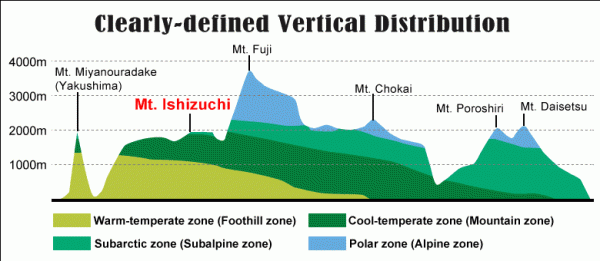
With an elevation range of about 2,000 m, Mt. Ishizuchi offers visitors a chance to encounter each of Japan's major vegetation zones (excluding subarctic and polar zones). It is a microcosm of the ecosystems of the Japanese islands, which extend for 2,000 km north to south. The alpine species that can be seen on Mt. Ishizuchi are called a remnant of the Ice Age, as these organisms have survived at high elevation and in harsh weather. The Ishizuchi Mountains are also home to many endemic species adapted to the unique environment. By one count there are over 40 such species in the mountain range.
Endemic Species of the Ishizuchi Mountains
"Ishizuchi sakura"
Ishizuchi Quasi-National Park
Quasi-National Parks are designated by the Minister of the Environment in response to requests from the local government for having picturesque scenery nearly on a level with National Parks.
Ishizuchi Quasi-National Park includes Mt. Ishizuchi (1,982m) and part of the Ishizuchi mountain range. It was designated on Nov. 1, 1955 and celebrated its 60th anniversary in 2015. The park has an area of 10,683 hectares and is mainly located in Ehime Prefecture. Among many features, it is especially known for the breathtaking beauty of the Ishizuchi Mountains and Omogo Gorge.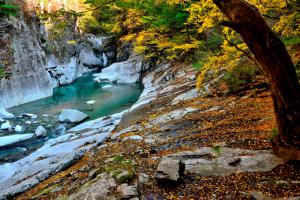
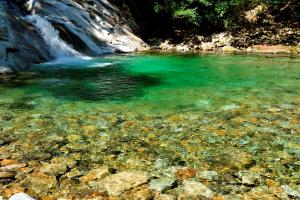
Uchinuki Springwater: A Blessing from the Mountains
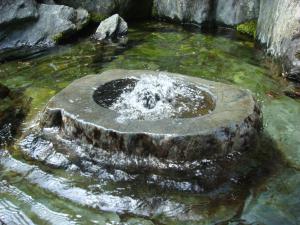
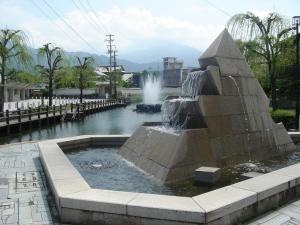
Natural springs in Saijo are known locally as "uchinuki." This groundwater flows out of 3,000 artesian wells across the city. The main source of uchinuki is water that flows from the Ishizuchi Mountains into the Kamogawa River. This water seeps into underground reservoirs where it is exposed to pressure, causing it to spring forth from the ground (the origin of the word uchinuki: "punching through"). This water has been used by residents of Saijo for centuries at home and in agriculture. Uchinuki springs give Saijo its nickname: the Springwater Capital.
Uchinuki has received national acclaim over the years. It was named one of Japan's 100 Famous Waters by the Ministry of the Environment (1985), a "Water Town" (Mizu no Sato) by the Ministry of Land, Infrastructure, Transport, and Tourism (1995), and judged to be the best-tasting water in Japan for two years running (1995-96).





